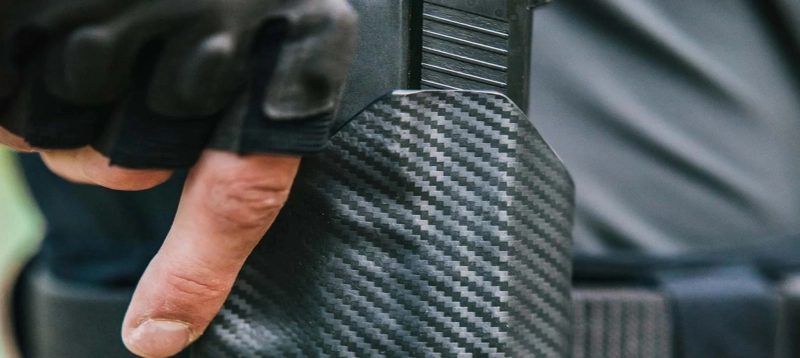Carbon Fiber composites with their incredible strength-to-weight ratio along with many other positive attributes have made an impact in defense applications. It has replaced and it replacing traditional metals in the defense sector. Metals and other robust materials have defined warfare and have been the foundation for military equipment for centuries. If we look at history, metals were used in the swords of soldiers, tips of spears, sharp knives, and heavy shields, and then shifted to cannons, guns, and heavy tanks. However, in recent years there has been a shift from traditional materials to composites. Offering a range of advantages, composites especially carbon fiber have been fundamentally changing the combat, protection, and prevention in the defence sector.
What are Carbon Fiber Composites and how are they reshaping the Defence Sector?
Composites are not a single material, but rather a category of materials formed by combining two or more distinct constituents reinforced with a matrix such as epoxy. The reinforced material provides strength and stiffness to the composite. The most common options are carbon fiber, glass fiber, and aramid fibers (e.g., Kevlar). Now, composites lend their unique properties such as low weight, high strength-to-weight ratio, corrosion resistance, and design flexibility to applications in the defence sector.
So, here’s how carbon fiber composites are reshaping military operations.
- Compared to metals, composites can offer significant weight reduction, crucial for creating faster, lighter body armor for soldiers, more agile aircraft and machinery
- While being lightweight, composites are incredibly strong, offering excellent protection against ballistic threats and impact.
- Carbon fiber sheets can be molded into complex shapes, allowing for aerodynamic designs in aircraft and customized ballistic protection for soldiers.
- Unlike metals that are susceptible to rust, composites offer superior corrosion resistance, reducing maintenance needs.
Composites in Defense Applications
The unique properties of composites have opened doors to numerous advancements in various defense sectors:
Aerospace and Unmanned Aerial Vehicles (UAVs)
Carbon fiber composites have been a name in aerospace since the composite material has been devloped. The lightweight properties without compromising on strength and corrosion resistance have turned up as a preferred material in the defense sector.
Fighter Jets: Modern fighter jets like the F-35 Lightning II utilize composite materials such as carbon fiber rods in their frames. This translates to lighter and faster aircraft with easy maneuverability, and that promotes fuel efficiency.
Helicopters: Rotor blades made from carbon fiber composites are lighter and durable leading to improved performance and payload capacity.
UAVs: The lightweight nature of carbon fiber is crucial for long-endurance drones used for surveillance and reconnaissance missions.
Land Vehicles
Armored Vehicles: Composite offers superior ballistic protection compared to traditional steel armor while maintaining lower weight. This allows for lighter and faster armored vehicles with increased payload capacity.
Military Trucks: Composite components in military trucks reduce overall weight, leading to improved fuel efficiency and payload capacity.
Naval Vessels
Warships: Composite materials are finding increasing use in non-critical areas of warships, such as superstructures and masts, due to their lighter weight and corrosion resistance.
Patrol Boats: Composite patrol boats offer a lightweight and durable alternative to traditional fiberglass vessels, making them faster and more maneuverable.
Personal Protection Equipment (PPE)
Body Armor: Modern body armor utilizes composite materials like Kevlar to provide lightweight yet effective protection against ballistic threats.
Helmets: Composite helmets offer superior ballistic protection while being lighter and more comfortable for soldiers.
Other Applications:
Composite materials are used in certain missile components due to their lightweight nature and ability to withstand high temperatures.
Composites are used to create protective coverings for radar systems due to their transparency to electromagnetic waves.
Challenges and Considerations
While the advantages of composites are undeniable, there are challenges to consider:
Cost: Advanced composites can be expensive compared to traditional materials like steel. Carbon fiber and other composites have a specialized manufacturing process using the latest technology which adds to the cost factor. Plus, the raw carbon material is high on the budget.
Manufacturing Complexity: Manufacturing processes for complex composite structures can be more complex and require specialized skills. There are different processes for manufacturing carbon fiber rods, tubes, sheets, laminates, fabrics and CNC parts.
Repairability: Repairing damage to composite structures can be more challenging compared to metals.
The Future of Carbon Fiber Composites in Defense
With continuous development and research, it is very clear that the future of composites in defense applications appears bright.
Carbon fiber composites have been bringing forth a change in defence sector. To cater to the customized demands, manufacturers have stepped into the composite industry. NitPro Composites is a name that is synonymous with reliability and revolution. Offering carbon fiber products such as sheets, rods, tubes, CNC parts, laminates and fabric manufactured with the latest technology of compression molding, vacuum infusion, vacuum bagging, weaving, etc. NitPro is looking after the growing diverse needs of composites for various industries including military operations.



